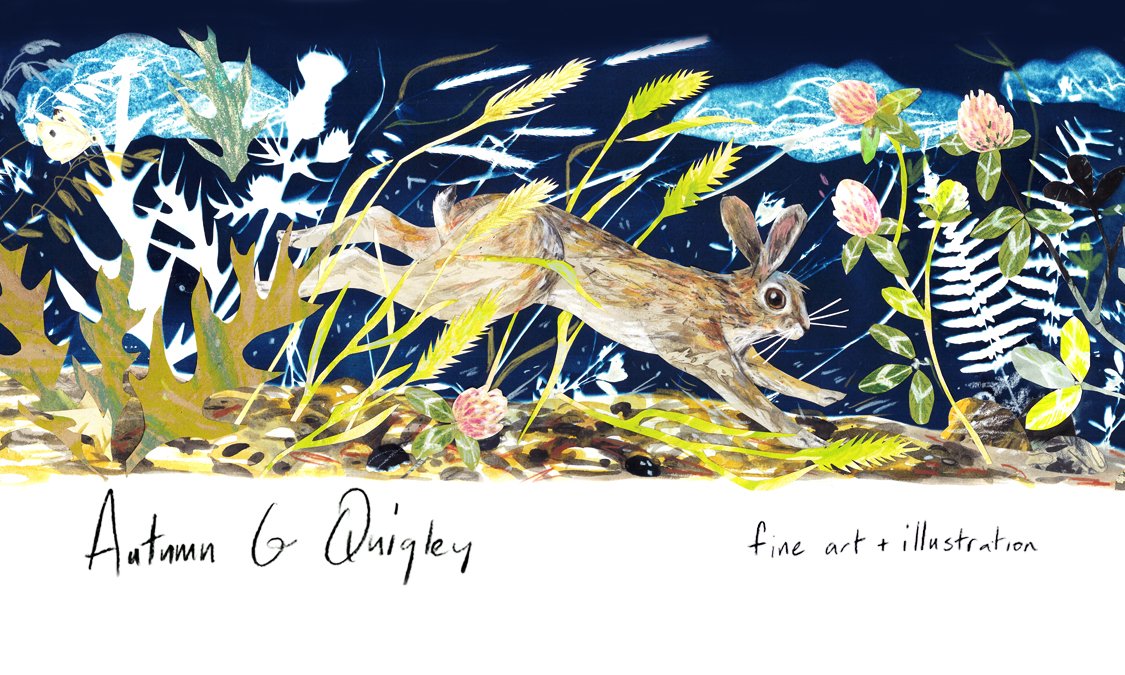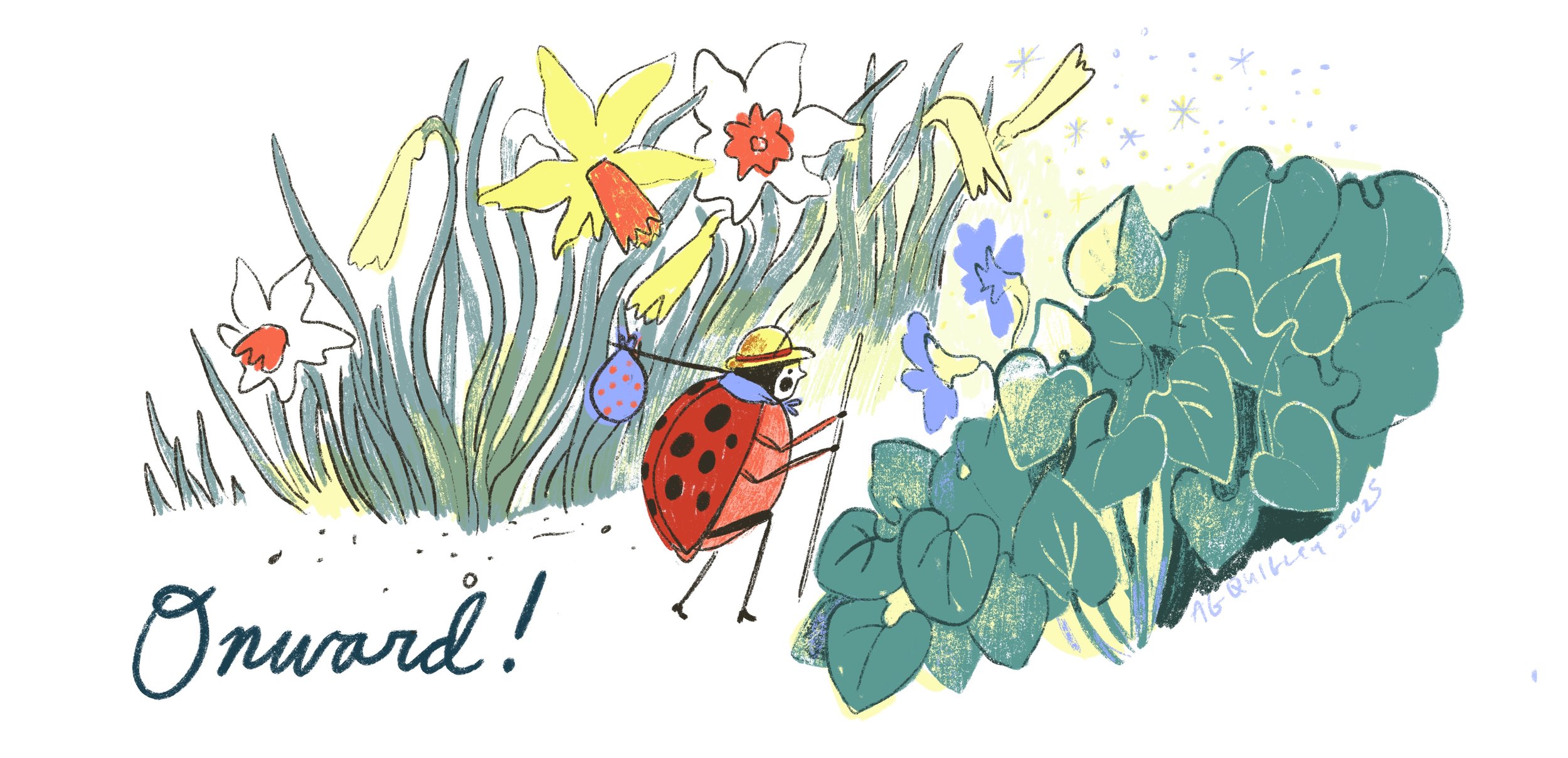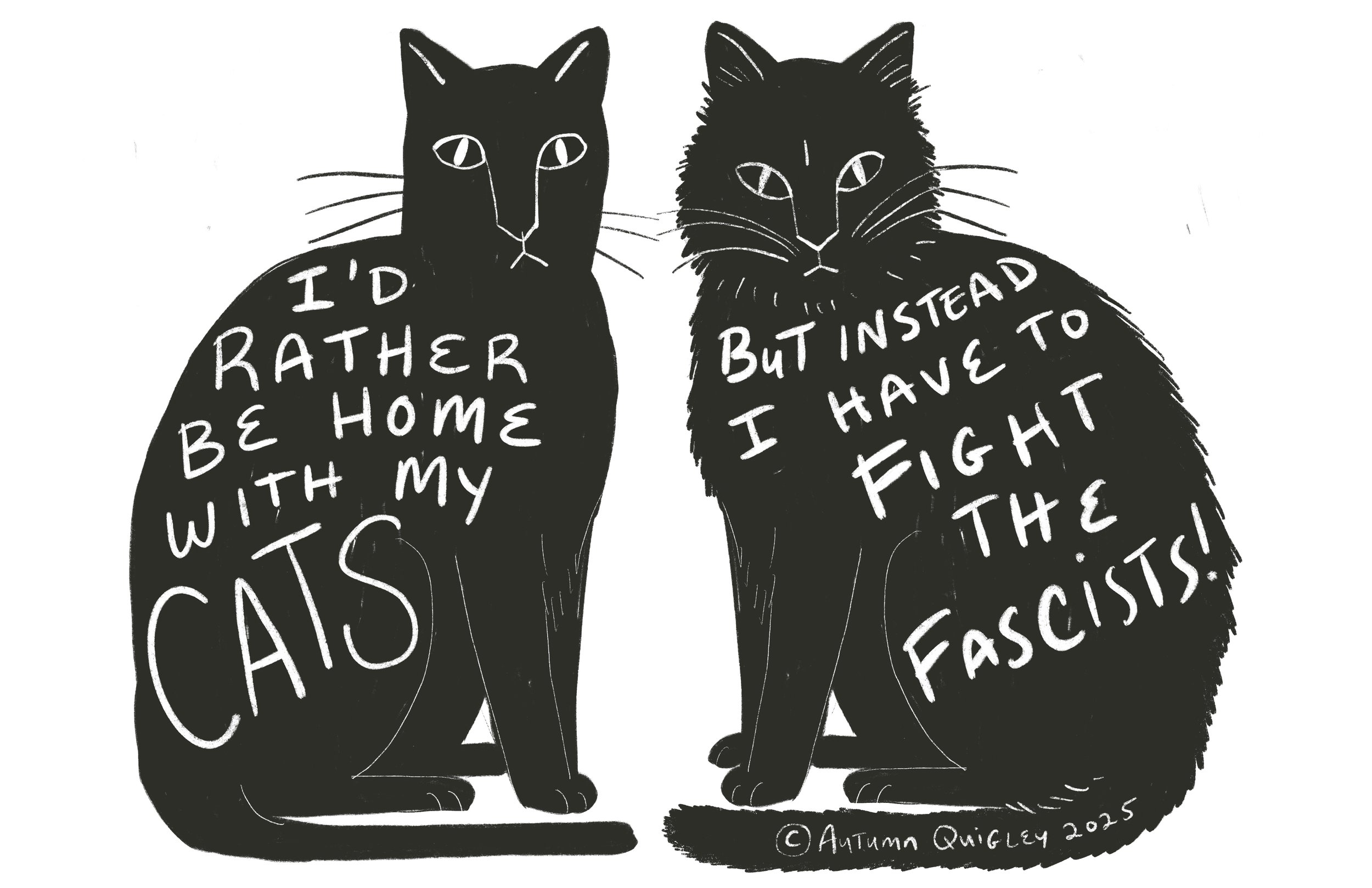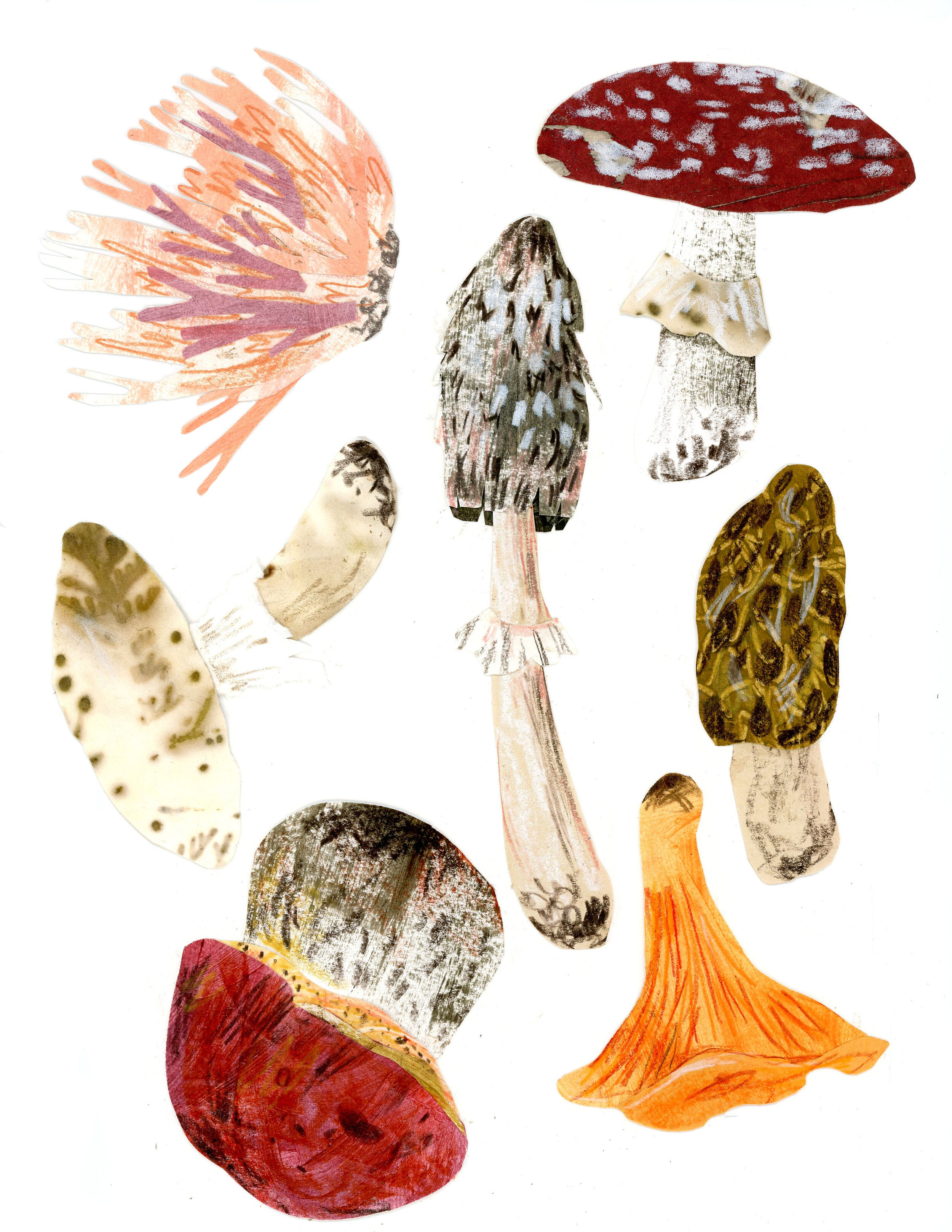Onward: On leaving Instagram
For years I’ve been threatening my dear friend and penpal poet Jory Mickelson with leaving Instagram. It has gained the mystique of one of those big things you fantasize about but are unlikely to do, — selling everything to become a shepherd wandering the Sera da Estrela or to live on a narrowboat in England, or learning to sew all my own clothes.
Instagram feels like a necessity as a visual artist, —that to leave is as good as quitting. And yet, as I navigate my artistic practice and my creative path, I find that it feels less and less nourishing to that process. In fact, I think it is actively undermining it.
I tend to look at it when I need a space filler more than anything, scrolling when I’m too tired to read, sketch, garden, etc. but not relaxed enough to sleep. If it could simply serve as a space filler that might be fine. But it doesn’t.
I follow a lot of artists, gardeners, and designers. My feed is really beautiful and pretty wholesome. And yet, after a few minutes on it I start to feel niggled by jealousy, annoyed at folk’s (actual friends even) endless self-promotion, comparing myself to a flawless and endless sheen of productivity, creativity, skill, luck, etc.
I’ve come to believe that it’s worse than television in a lot of ways. Most of us are smart enough to realize the production that goes into television. That tv is not real. “Kill your TV. Get off the boob tube. TV rots your brain.” We grew up with it. But the internet is different. Social media began as a network of people most of us actually knew but has morphed into something else entirely. I got my Facebook account in 2005, back when it was only available to college students and so college students I had met, albeit some maybe only once in the dining hall, were my only friends. For most of my 10-year-tenure there I only was friends with people I had at least met in passing.
I think I joined Instagram about 2012 or so. It was different in that I followed both friends and people I’d never met. But at that time it felt a bit DIY. Artists, chefs, farmers, activists, etc sharing their work through the haze of bad phone camera lenses and silly filters. It took me quite a while to realize that the Instagram I joined had changed from something that felt fairly low-key to something that required more than a phone camera if you wanted to gain followers.
By now we’ve all realized just how highly curated most photos and profiles are. However, the amount of production and resources behind them is not transparent. It’s not clear whether you are following someone who is one person or a whole team of people. And that is why I think it is more detrimental than television, it’s not clear just how unattainable or unreal it is. We used to call it “programming,” now we call it “content,” and anyone can make it. But when you put that highly curated and laboured “content” next to honest photographs of folk’s lives, which is what the content is masquerading as, its like watching the local access station next to cable. It’s such a weird mashup too. One moment I’m looking at pictures of my friend’s kids birthday party, the next I’m looking at photos of a garden by an award winning designer, then I’m watching an overdubbed video of a duck fleeing its instantly bereaved owner, then it’s an aggressive political post, then it’s someone’s achingly enviable vacation photos (the same person who always seems to be on vacation, only they call it traveling, so it’s somehow about becoming a better person), then it’s someone’s unfathomably prolific and skilled sketchbook, and on-and-on. Same, same, right?
I regularly find myself searching the internet for articles and blog posts about creatives who have left Instagram. It’s become the 21st century equivalent of leaving the city. I remember reading an essay by Wendell Berry some years ago in which he spoke about leaving New York City to return home to Kentucky. His peers, including Wallace Stegner, tried to talk the nascently successful Berry out of it, certain that it was professional suicide. But Berry stayed true to his belief and returned to a slower pace of life that he felt more aligned with.
“As for the literary world, I had ventured some distance into that, and I liked it well enough. I knew that because I was a writer the literary world would always have an importance for me and would always attract my interest. But I never doubted that the world was more important to me than the literary world; and the world would always be most fully and clearly present to me in the place I was fated by birth to know better than any other.
And so I had already chosen according to the most intimate and necessary inclinations of my own life….”
I believe that to be on a creative path is to be in constant conversation with how you can further the vision for the world you wish to live in, to choose “the most intimate and necessary inclinations,” of one’s own life. My world doesn’t include pointless hours scrolling through the endless void of self-promotion. My interest in pursuing my art doesn’t include being a content maker and I believe that it doesn’t necessitate it either. My relationship to my work and “the world” is more important to me than successes that may be available to me via Instagram. That may mean changing goals, expectations and approaches to fit that vision. Artists are used to changing approaches, erasing and starting again. I personally have a whole trunk full of discarded projects that often find themselves repurposed down the line.
One of my favourite instructors, artist Marlana Stoddard-Hayes, often reminded her community college drawing students that only 10% of what we make will be any good. At first that seems a bit depressing, but really it is permission to keep making regardless of the successes of an individual work. What’s funny about that, if you think about it, is that over the scope of a working career you’d think that would change, but I don’t think it really does. Perhaps there’s a fallacy here, but I think that it’s about perspective. As you grow, your awareness and tastes change, your expectations change, and perhaps there is more willingness to move forward and chuck what’s no longer serving you. It is the process that matters, not the resulting work.
And one more thing about Instagram, beyond the scroll and beyond the horrible politics and deplorable A.I., it’s weakening my sense of wonder. It’s watering down the actually incredible and inspiring work people are making. I know a lot of makers likely wouldn’t be supporting themselves without the reach that Instagram provides, and I have no answer for that and I’m not criticizing them for doing what works for them. I’m so glad that independent artists and craftsmen can keep doing their thing. However, I feel that when everything is so visually available all the time it doesn’t feel special. It feels like a commodity. I can order that sticker/t-shirt/print at anytime. I don’t have to buy it now at this funky and inspiring little shop I stumbled into in a city I’m unlikely to ever visit again.
I have a print on my wall by artist Zoe Tilley Poster that I bought in a little gallery Vermont. It’s so lovely and it reminds me of driving the gentle but mysterious, green and wooded hills on a road trip my partner and I took there a few years back. I’d never heard of Poster but her work spoke to me in the gallery in a way in wouldn’t have on an endless scroll. I still would have liked it, but the resonance would have likely been forgotten with another flick of the thumb. Not because it’s not good, strong, enchanting work, but because that’s how the app functions. I think that we deserve enchantment. I think enchantment comes in fleeting moments. It’s meant to be stumbled upon and savoured. It can’t be guzzled. We’re guzzling it. When I take time off Instagram that enchantment comes back. It’s like when one abstains from sugar and ordinary fruit ends up tasting exquisitely sweet.
I want to stumble on enchantment in galleries, record shops, libraries, and independent boutiques. On community boards at the co-op, in alleyways, in the sky, forests, meadows and puddles. Once while visiting Victoria, B.C. I wandered down an alley in which a mural made of piped cake icing of a tall ship was slowly melting and flaking away from the brick wall in the weather. I will never forget that artwork. It was absolute magic.
My relationship to my work is changing too. I want to savour the experience of making and learning to be better. I don’t want to feel that process needs sharing. At this point, I’m more interested in my relationship to my creative work than any other life my work might have. I especially don’t want it dictated or influenced by algorithms.
I’m hoping to share some of it here. As well as, thoughts on the creative path.
Thanks for sticking with me this far. If you’re still reading please go do something enchanting. Here, the woods smell of violets and trilliums are blooming, many fading to pink on their way out. I think I’ll go walk amongst them.
P.S. The icing mural was by artist Shelley Miller







